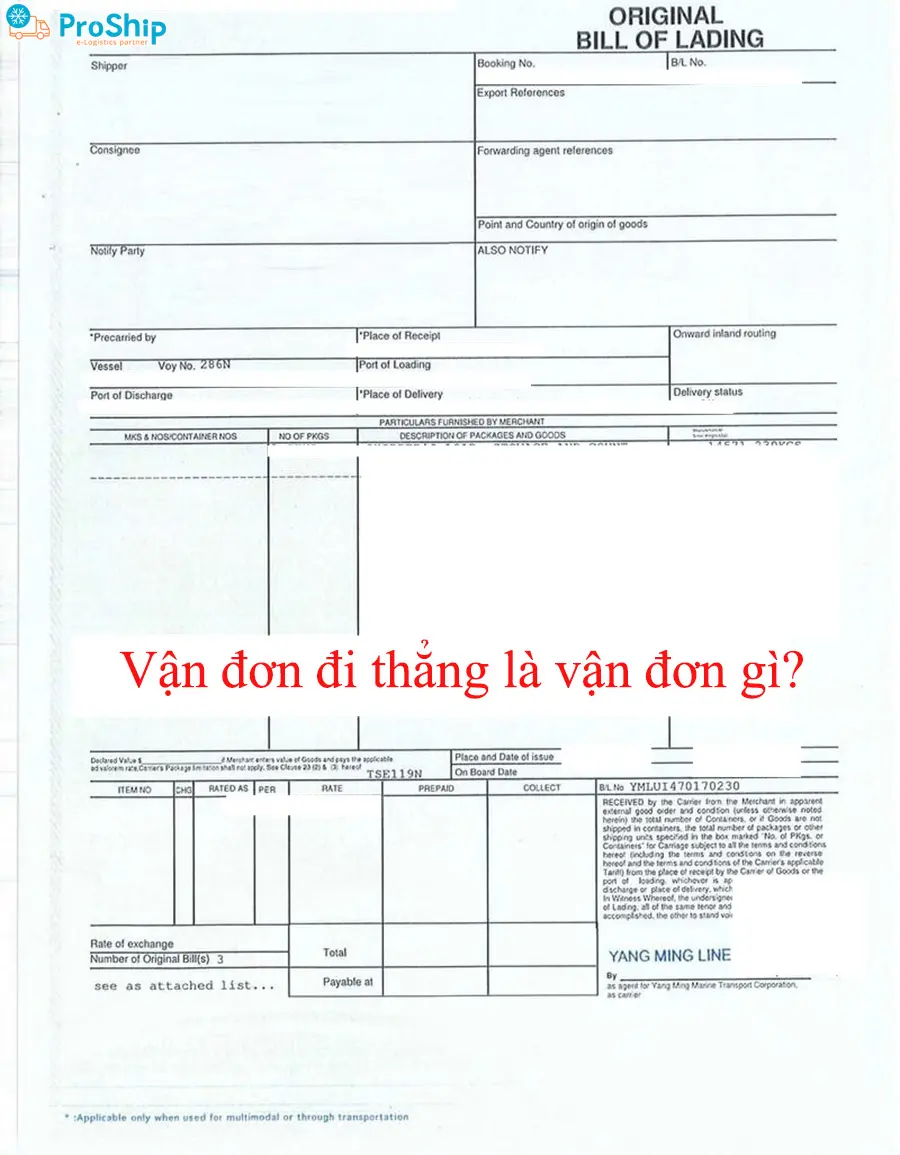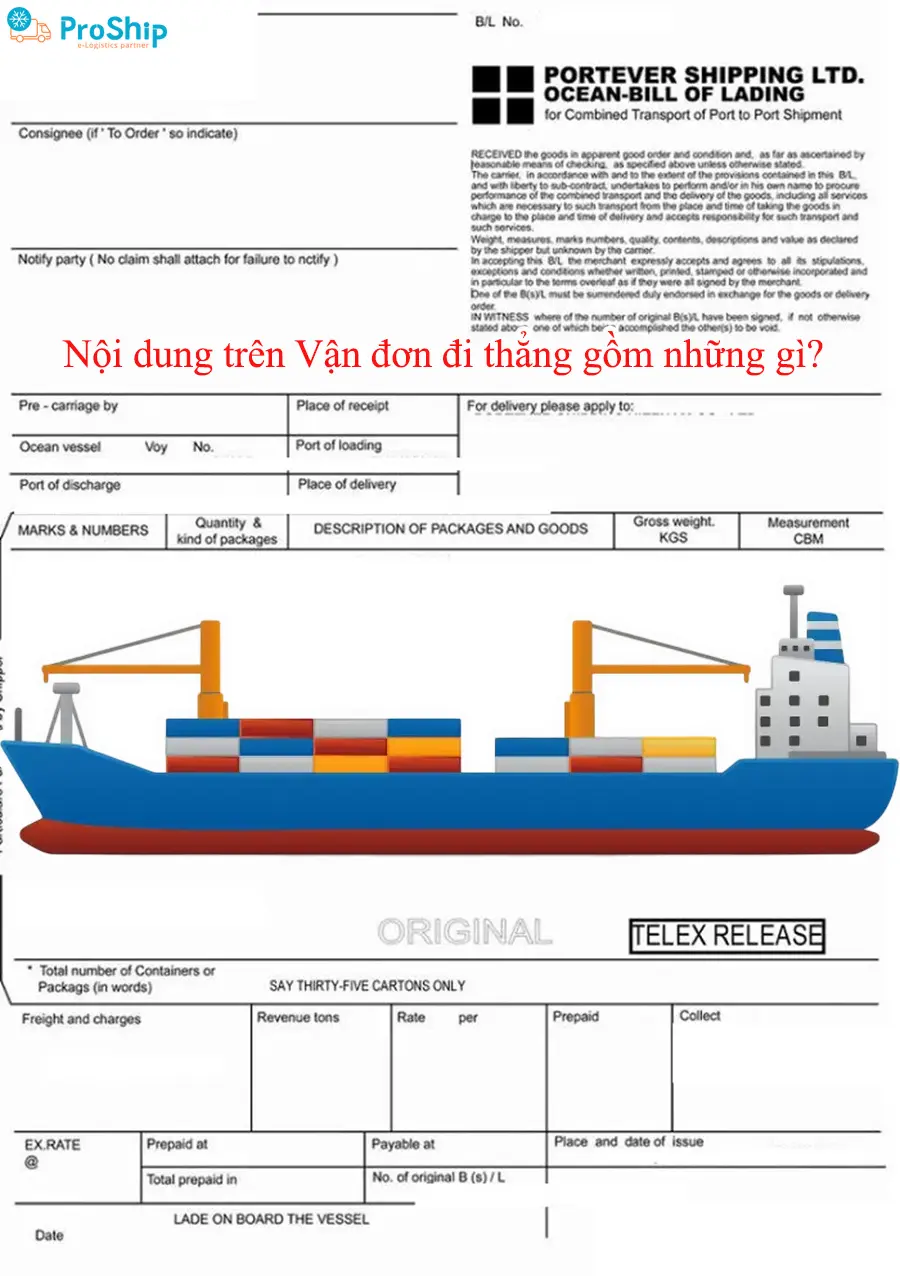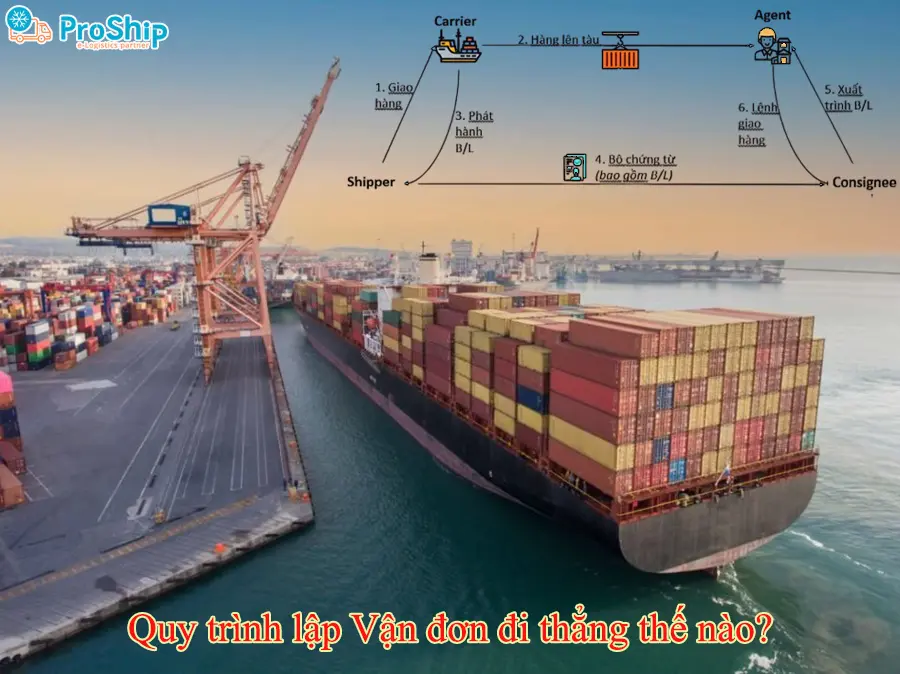X Do you have a shipment of sea transport and are learning about the bill of lading, including the bill of lading go straight?
x You do not understand how the bill of lading is called the bill of lading go straight? This type of bill of lading has functions and effects?
X and you also do not know how the bill of lading go straight is set, how the order of the bill of lading is complicated?
In fact, the bills of lading go straight have different differences compared to ordinary bill of lading. If you want to know what that difference is, let's with Proship.vn we update the latest information on the bill of lading, the benefits, how to make a bill of lading as well as the difference of this bill of lading compared to the bill of lading. . Shippers and import -export enterprises can read to understand this type of bill of lading.
What is the bills of lading straight? What effect?
Let's find out how the bill of lading is called the bill of lading and what effect:
What is the bills of lading straight?
The bills of lading straight is a type of bill of lading used in case the goods are carried straight from the loading port to the port of loading and unloading, only carrying a ship without transferring any transmission or a ship to any port.
The Bill of Lading is a maritime bill of lading that confirms that the goods have been received by the shipping from the shipper and will be delivered directly to the final recipient.
In addition to the straightforward bill of lading, in logistics freight, there are other types of bill of lading divided according to the characteristics of transportation such as multimodal transport bill and carrying bills.

The effect of the bill of lading go straight
The direct bill of liter has many of the following effects:
- Safety of ownership:
The bills of lading go straight to clearly identify the appointed person as the consignee, eliminating all misunderstandings about who owns the ownership of goods. This helps ensure ownership and avoid the transfer of unwanted ownership.
- Minimize errors:
The need for no need to convey goods through many vehicles and ports will reduce the risk of errors, damage or loss of goods.
- Exactly the destination point:
The bill of lading go straight to ensure that the goods will be delivered directly to the recipient at the destination point, no need through intermediaries or change the ship many times,
- International trade transactions:
In international transactions, the use of straightforward bills can help increase flexibility and convenience in payment and delivery to participants.
- Reduce risk:
The use of Direct B/L helps ensure accuracy and safety in delivery.
The information content on the bill of lading go straight
On straightforward bills, there will be sufficient information like other maritime bills, only the difference in the non -transferred terms. Specifically:
- Title of the bill of lading: Bill of Lading, or without the title;
- The name of the carrier (Shipping Company, Carrier): company name or transport company;
- The name of the delivery person (shipper, consignor, Sender): usually the seller;
- Consignee (consignee): If it is a single bill of lading, this box will write the name and address of the recipient, if it is anonymous bill of lading, it will record "to (the) order", "to (the) order of ... ”;
- The notified party (notify party): Write the name, address of the consignee or the L/C open bank, to notify the goods and the ship's journey;
- Place of Receive;
- Port loaded on board (Port of Loading);
- Port of Discharge (Port of Discharge);

- Place of Delivery;
- The ship and the number of vessels (Vessel and Voyage No.);
- Number of originals is released (Number of Original);
- Marks and numbers;
- Number and type of package (number and kind of packages);
- Description of goods (Description of Goods);
- Gross weight (gross weight) weight includes packaging;
- Net weight (net wight);
- Date and place of bill of lading.
Distinguish the bill of lading with the bill of lading go straight
To distinguish Through Bill and Direct Bill, it will be based on the cargo journey. The characteristics of each type of bill of lading are:
The bill of lading goes (Direct B/L)
The bill of lading (Direct B/L) is granted when the goods are carried straight from the port of loading to the port of unloading without transferring along the way. At this time, the goods are not transferred from one ship to another or without the intervention of third parties during transportation.
Through bill of lading (through b/l)
Through bill of lading (through b/l) is granted when goods are transported through several stages, from the beginning to the end of the transportation journey.
The bill of lading ensures that the goods are continuously transported from the port to the destination port without the convey or intervention of third parties on the way. In this process, a distributor of the transparent bill will be responsible for the goods from the beginning to the end of the transportation journey.
The process of making a bill of lading go straight to Direct Bill of Lading
The process of establishing a straightforward bill is conducted as follows:
Step 1: Prepare the necessary information
Shipper information (shipper), consignee (consignee). Commodity information: Detailed description of goods, quantity, weight, size, HS code. Information about transportation: port, destination port, expected delivery date, ...
Step 2: Search and select shipping lines or transport houses
The shipper contacts the shipments and requests to make a bill of lading straight, request to provide information about transportation: port, destination port, expected delivery date, transport means.
Step 3: Make a bill of lading
Shipping lines or transportation users use information provided by the shipper to make a bill of lading. It will appoint the consignee (Consignee) who is originally appointed and does not have the "To the Order of [Bank name]" . The two sides of the sender and the shipping company confirmed and signed the bill of lading. At this time, the bill of lading was officially released.

Step 4: Delivery and freight according to the bill of lading go straight
The shipper conducts goods delivery to the shipping company or transportation by time, location and information as committed as committed. The goods will be shipped from the sender to the buyer according to the agreed journey without transferring the goods through any ship or container.
Step 5: Buyers receive goods at the destination point
Consignee (consignee) receives the goods at the destination point in accordance with the information on the straightforward bill and is the person with the ownership of the goods.
The bill of lading go straight with the knowledge related to Direct Bill of Lading such as concepts, effects, content, formation of the bill of lading, etc. has been synthesized and shared by the business Proship specializing in making sea -export goods. Understand what this type of bill of lading is. In addition, if there is a need to use the domestic and international sea and international container transport service, please contact 0909 344 247 for support to provide the best price service.
